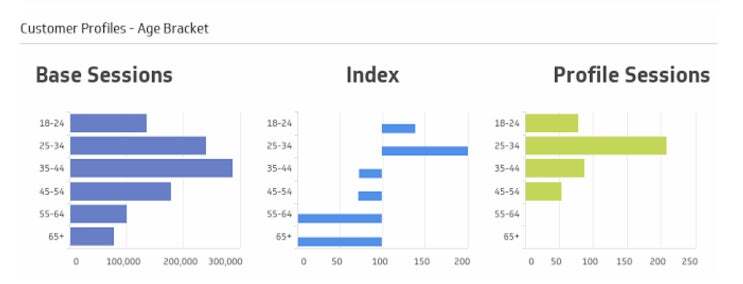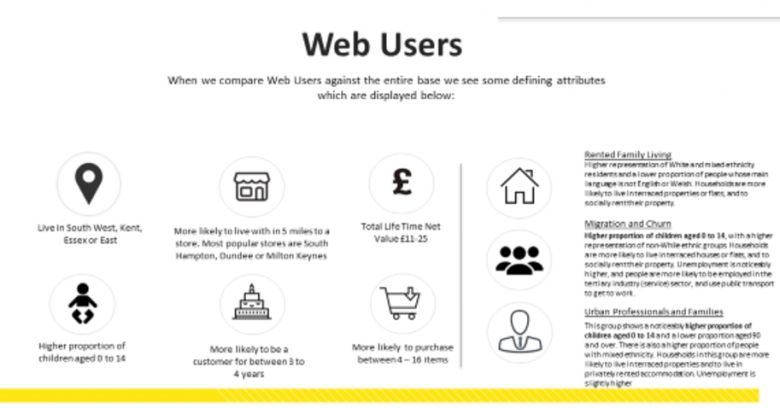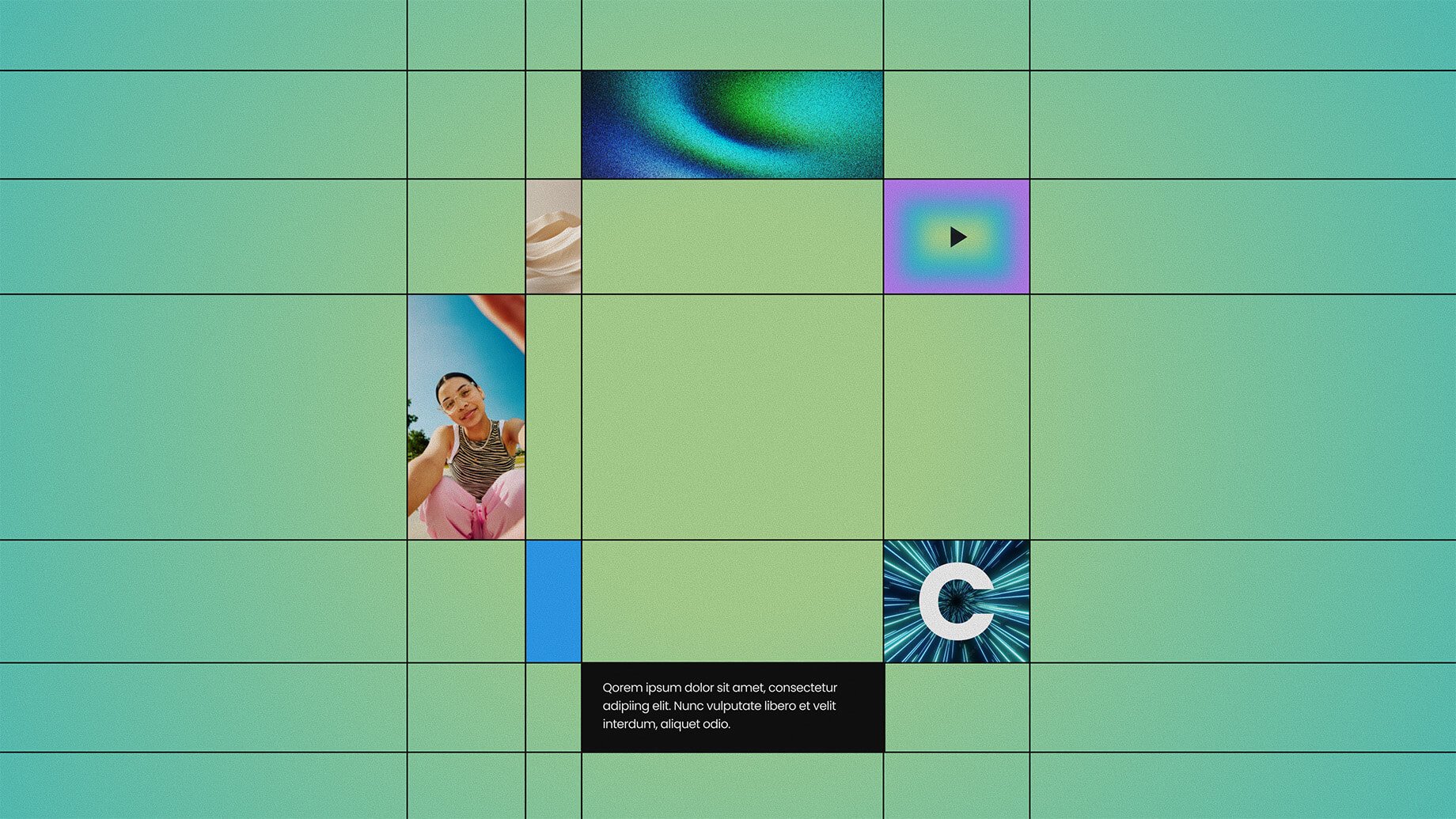How to create meaningful customer personas
Producing customer personas is the first step to creating a marketing masterpiece.
Marketing is a fickle game, and going at it blind is dangerous and, quite frankly, irresponsible – nobody wants to receive irrelevant messages. If customers are willing to receive something they want to receive something tailored to them.
Producing tailored content for a marketing campaign doesn’t have to be based on gut feel. With the wealth of information held on CRM systems, Google Analytics or even census surveys, the ability to understand more about a customer is only a data analyst away. Producing customer personas is the first step to creating a marketing masterpiece.
Customer personas are defined by profiling a subset of your customers and finding out what makes them fundamentally different. They help marketers focus, guide decisions and primarily puts a face to an unknown audience. Knowing what makes your customers different will help tailor advertising, which, in turn, will gain more awareness and will lead to more revenue.
So how do you go about making customer personas?
I like to think about it as making a delicious meal. You prepare your raw ingredients, you cook them and then present the final product on a plate.
Preparation of raw ingredients
The basis of any meal is the ingredients you use – there’s no point sourcing beef mince if you’re making an English trifle. You also need the ingredients to be of a certain quality.
Defining customer segments
When creating customers personas, the first question you need to ask is what customer groups do you want to know more about? Is there a product you want to promote? Do you want to appeal to customers who lapse? Or maybe you want to know about your most valuable customers?
Come up with as many ideas for customers groups as you can. Sometimes insight can come from identifying similarities or differing characteristic within the customer groups.
It is also important to ensure that the customer groups can be defined within the data to which you have access. There’s no point trying to understand an over 50s group if you don’t have a record of your customer’s age or date of birth.
Gathering data
Probably the most important part of the process is gathering data that will help shape the characteristics of your customer groups. There are multiple sources of customer data that could already exist, such as existing CRM systems customer databases etc. You can also use website tracking tools such as Google Analytics or Site Catalyst to understand your online audience.
If data is not available then it is important to set up processes to capture that information providing you are within the realms of data protection laws.
The data may already be available but on separate systems, in which case, setting up a process to link the systems together will allow you to enrich your customer profiles.
An alternative data capture method is to use surveys. These won’t necessarily capture the whole audience but will give you a good understanding of a subset of customers. The advantage of using surveys is that you’ll be able to capture information about people outside of your database such as potential customers – very important if you’re expanding overseas.
Useful variables
The most useful variables to use in profiling your customer segments include:
- Age – helpful to define life stage
- Gender
- Wealth
- Work location
- Home location – can be used to define wealth
- Profit to your company – how much have they spent etc
- The products they have purchased
Cooking – Processing and Analysing the Data
The most important part to any meal is how you cook it. You could have the best raw ingredients in the world, but leave them in the oven for too long then you’re going to have some tough, burnt analysis.
There are a few methods available to understand the customer base. My favourite is univariate analysis using indexing.
The benefits of using this method is that it is quick to produce once data is available. It’s flexible and provides valuable insight as well as providing the ability to test statistical significance.
The downside is that it is Univariate – one variable at a time. This means that you can’t combine the outcome of two variables into one. For example, if were to look at lapsed customers and the outcome of the Univariate analysis was that over 50s are more likely to lapse and males are more likely to lapse, this is not to say that males over 50 are even more likely to lapse. The truth could be the opposite. To overcome this, you could derive a new variable that combines age and gender.
You can even get into the realms of producing a customer segmentation model – a model that categorise your customers so you don’t have to define the segments, you get the maths to define them for you.
The basic premise is that you take the customer segment and compare it to the overall customer base, for each value of each variable. By comparing the proportions against each other you can start to understand how the customer segment is different.
To identify how significant the differences are you can calculate the index by using the proportions. But to ensure that the results are robust, statistical significance can be calculated using a z-Score and p-Value.
The z-Score defines how many standard deviations away from the mean the value is. The p-value converts the z-score into a probability assuming a normal distribution. In most situations, you would want the p-Value to be above 95% this means that the result would be correct 19 out of 20 times. In marketing, if you have not a lot of data then sometimes you can go as low as 90% (9 out of 10). In medicine, you really don’t want thing to go wrong so tests would have to have a p-Value of 99.9% (999 out of 1000).
In the below example, we can see the distribution of the age bracket for our customer segment (the profile) against the entire customer base. In the middle is the index. Where the index is over 100 then the customer segment is more likely to portray those characteristics. If it’s below 100 then it is less likely.

The above shows that the customers segment is much more likely to be younger than the overall population given that the index for customers between 18 and 34 are well above 100.
Alternative Methods
Alternative methods of analysing customer data involve taking this method forward and producing multivariate models. Mathematical techniques such as Linear Regression or CHAID are great for defining what characteristics define a customer segment. You can even get into the realms of producing a customer segmentation model – a model that categorise your customers so you don’t have to define the segments, you get the maths to define them for you. These models sound great but the downside is that they can take a lot of time and effort and require a significant amount of data to produce meaningful results.
Meal Appeal – Presentation of Data
As any great chef will tell you, you eat with your eyes first. The food may taste great but if it looks like a massacre you’re not going to impress.
This is the same for data analysis, making the data more appealing will help people digest it quicker and ensure that the right message is portrayed.
The outcome of a customer persona is turning the spreadsheets and graphs into visual representations of the results

Conclusion
Hungry? With a menu of customers personas, you’ll never go hungry again. With your customer personas, you’ll have a greater understanding of your audience so that you can tailor marketing messages are more appealing. Targeting those more likely to purchase can lead to more visits and eventually more revenue.
Targeting those more likely to purchase can lead to more visits and eventually more revenue.
Looking to create customer personas for your business? We’d be happy to help. Email hello@www.gravityglobal.com for more information.


